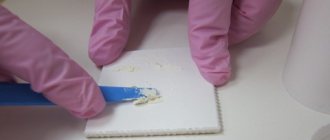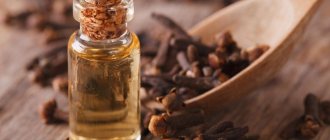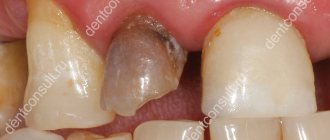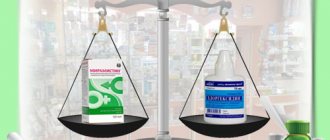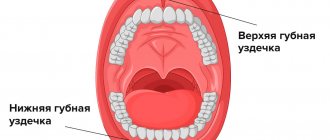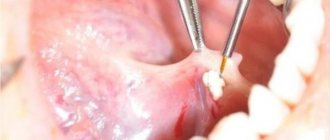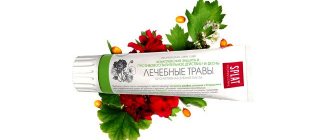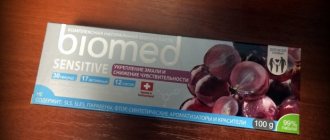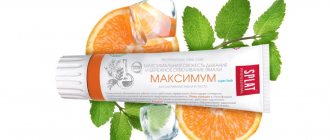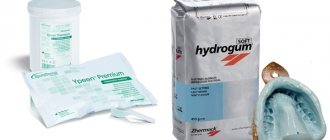Sealers-Endogermetics in Dentistry
No high-quality endodontics is complete without a sealer. In simple words, a sealer is a material, in this case cement, paste, that fills the space between the wall of the root canal and gutta-percha. Sealers not only provide tight sealing of the root canal, but also prevent the development of infection inside the root canal and outside its apex, so it is very important to know and understand what, why and how to use a sealer. Indeed, for each clinical case it is necessary to choose a specific chemical and physical composition of the sealer. There are many types of sealers on the dental market; in this article I will try to introduce you to some of them.
Requirements for the sealer
The requirements for the sealer are quite logical and meet the requirements of quality patient treatment. First of all, the sealer must be biologically compatible and not have a pathological effect on periodontal tissue or the general health of the patient. In addition, a high-quality sealer should not change the color of the tooth some time after filling the root canal. The next requirement for the sealer is its resistance to moisture and gingival fluid; the sealer should not dissolve in them. For a doctor, the requirements for a sealer are as follows:
- Convenient working hours;
- The material must be plastic, tightly seal the teeth canals;
- Possess adhesion to tooth dentin;
- Do not shrink;
- Do not form pores;
- Be radiopaque;
- Teeth filled with sealer should be easily refilled if necessary;
In addition, the sealer must influence the microflora of the root canal and have either a static/cidal effect in relation to microbial agents.
Unfortunately, most sealers are not 100% insensitive to moisture or gingival fluid. As a result, the formation of microspaces, micropores, microleakages at the border of gutta-percha and the wall of the root canal. And any space is filled with pathogenic microbes, which causes the development of a pathological process.
Possibilities of dental cement
Glue for crowns makes it possible to tightly attach the crown to the root socket and prevent it from falling out of the gums. You can buy such material in specialized stores or at a pharmacy. Each dentist prefers to use a mass familiar to him, from a certain manufacturer. It must be said that if you buy inexpensive material, you can’t hope for a positive result.
Crown adhesive allows you to:
- firmly attach the crown to the tooth socket and thereby hold it during chewing movements;
- prevent the process of tooth decay from the inside;
- create a durable protective coating that will prevent bacteria from entering the tooth.
Recommendations from experts on the selection and use of dental glue
In case of severe tooth decay, when treatment is simply impossible, crowns are used. This fixed prosthesis accurately imitates a lost tooth and performs all its functions .
Before installing a crown, the damaged tooth is ground down and then special dental cement is applied. This material allows you to firmly attach the crown and not move during the chewing process. This material, after hardening, becomes very durable.
A prosthesis fixed with such a mass can serve a person for more than 10 years without causing any inconvenience to the person - an unpleasant smell or taste.
Even if you buy the strongest adhesive, this does not guarantee that the cement will withstand even the most intense and severe loads . Very often, a crown can fall off at the most inopportune moment, and then you need to immediately contact your dentist. When this is not possible, you can fix the problem at home.
Related products
Dental tray LMS for 8 instruments with lid
Endogel No. 2 syringe - material for chemical-mechanical expansion, cleaning, shaping and antiseptic treatment of tooth root canals (gel 3 ml)
Viedent set - material for filling root canals of teeth (20 g + 10 ml)
Two-component argenate - material for silvering infected and difficult-to-pass canals, carious milk teeth (4ml+3ml)
Dental tray with lid and storage for LSKB burs
Rectangular tray LMPr 400x300x45
Stomaflex Light/Stomaflex light-C-Silicone impression material of low viscosity and higher fluidity (paste 130 g)
Dental tray with lid and storage for endocanal instrument LSCE
Viedent - material for filling root canals of teeth (paste 4 g + paste 4 g)
Polident No. 4 - paste for final processing of fillings (paste 6 g)
Rectangular tray LMPr 300x220x30
Cotton Rolls/Dental cotton rolls Medicom (1000 pcs.)
Attention! FREE delivery of goods applies!*
Air entrainers
Advantages
Thanks to the use of an air-entraining additive, cement becomes more porous, which increases the frost resistance of constructed structures by 2 or more times. Why? Because frozen water expands into the resulting microscopic pores, and not into the thickness of the cement. That is, the main task of the additive is to create a microporous structure in the cement mortar.
In addition, air-entraining additive for cement:
- makes the solution more homogeneous, plastic and mobile by 15-30%;
- increases the degree of water resistance;
- increases resistance to aggressive environments and salts;
- reduces density by 50...150 kg/m3;
- prevents an increase in internal pressure;
- reduces cracking;
- helps reduce the degree of stratification of the solution;
- eliminates the appearance of corrosion on the fittings.
Cement mortar with air entrainment has improved workability.
Dosage
The product is introduced into the mortar in small doses. The concentration is indicated on the product packaging. As a rule, the calculation is made according to the principle: 0.05-0.20% of the additive from the total mass of the mixture.
It is recommended to dilute the additive in water and pour it directly into the concrete mixer when mixing the mortar.
Important ! An overdose of air entrainer leads to a decrease in the strength of the structure (an increase in air content by 1% reduces the strength of cement by 5.5%).
Scope of use
An air-entraining additive for cement is used for:
- construction of road, airfield and bridge structures;
- performing plastering and masonry work.
PS The product should be stored in a tightly closed container, in a place protected from sunlight and frost.
Mix accelerators
Advantages
The main purpose of this cement additive is to speed up the hardening process of the solution. At low ambient temperatures, the setting time of the mixture increases, and in severe frost it stops altogether (due to crystallization of the water included in the solution). Moreover, when thawing, the building material loses quality: it becomes more prone to cracks, poor compaction, and shrinkage.
Thanks to the accelerator, the procedure goes faster. This allows you to do multi-layer pouring in a shorter time, which significantly saves labor and money costs.
At the same time, other quality characteristics of the building material are improved:
- mobility increases;
- strength increases by 25%;
- resistance to moisture improves by 3 times and temperature changes;
- workability increases.
The product is available in powder or liquid form.
Dosage
Indicated on the packaging. Can vary from 0.02 to 5.0% of the total mass of the cement mixture.
What is it used for?
The accelerator should be added to cement:
- If necessary, build a large number of structures in a short time.
- When construction is carried out at ambient temperatures below 0°C.
- In a situation where it is not practical to wait 28 days for the solution to completely harden.
The additive is also used when solving non-standard construction problems, for example, pouring a monolithic pool bowl.
Important ! The accelerator contains chemical elements, so it is not used together with reinforcement, nor is it combined with other cement additives.
Video: CemFix concrete hardening accelerator
Retarders
Advantages
As the name of the additive suggests, it is used to slow down the hardening process of cement. That is, thanks to this product, the setting of the solution is paused, prolonging the “survival” of the finished composition.
In addition, when using the product:
- workability is maintained;
- the mixture is highly mobile;
- Cement costs are reduced;
- strength increases;
- shrinkage is reduced;
- the surface quality of the finished project improves.
This is an important additive that allows for trouble-free cementing and the erection of strong monolithic structures.
How does it work?
Once in the solution, the additive begins to inhibit the hydration of cement. Lime in the material is released more slowly, which slows down the process of binding the grains.
Dosage
As for the percentage of the additive to the total mass of cement, it is determined experimentally on small volumes of the mixture.
Why use retarders?
It is advisable to use a cement additive when:
- It is necessary to transport the cement mixture over long distances.
- There is no way to quickly pour cement.
- The technical process is designed for the gradual use of the mixture.
- Large areas need to be cemented.
- Gently build a precast cement structure.
Retarders are also used to create exterior wall panels.
Video: surface concrete retarder
Compaction additives
Advantages
The main property of the product, also known as a “colmatizing additive,” is an increase in the density of the material, which in turn has a positive effect on the service life of the mixture. How does it work? The additive fills the space between the grains of cement, thus increasing its density, strength and water resistance.
When adding the product, the cement becomes more:
- uniform and smooth;
- frost-resistant;
- wear-resistant;
- durable.
Cement with a compacting additive is less susceptible to aggressive environmental influences.
Dosage
Recommended proportions, according to practical studies: from 0.1 to 0.12% of the additive in liquid form of the total mass of the cement mortar. The dosage may vary to a greater or lesser extent depending on the requirements for the solution.
Area of use
It is recommended to introduce a compacting agent at the end of mixing or together with the mixing water. From the moment the product is added, the solution should be stirred for at least 30 minutes.
The compacting additive for cement is suitable for the production of:
- drainage products;
- paving slabs;
- cement pipes;
- wall blocks;
- drainage trays.
The product is also actively used for waterproofing structures that are operated in conditions of high humidity. For example, these could be: tunnels, hydraulic structures, water tanks, cellars/basements.
PS If the cement additive is frozen, it can only be used after it has completely thawed at room temperature and thoroughly mixed.
Video: complex compacting additive for pouring floors and screeds
Corrosion inhibitors
Advantages
The use of this additive for cement can significantly slow down or completely stop the process of corrosion formation on metal products. Thanks to this property, the steel elements of the structure are protected from corrosion and, accordingly, subsequent complete destruction.
When corrosion inhibitors are added to cement, the following changes occur:
- mobility increases;
- the possibility of hardening at low temperatures increases;
- electrical conductivity increases.
The additive also slightly improves the strength of the material.
How does it work?
Corrosion inhibitors form an oxide film at the junction of cement and metal. The passivating film, while reliably protecting metal structures from oxidation, does not affect the quality of the cement mortar.
Dosage
It is important to correctly calculate the dosage of the product, since an insufficient amount will not work, and an excess will negatively affect the quality of the cement mortar itself. Therefore, it is important to strictly follow the recommendations prescribed by the product manufacturer.
Scope of use
Cement with a corrosion inhibitor is used for:
- protection of steel reinforcement, which are used in aggressive environments (gas, sea water);
- repair of reinforced concrete structures that have suffered from the influence of aggressive environments;
- replacement or restoration of the protective layer of cement.
Important ! Corrosion inhibitors cannot be used in conjunction with chlorides, as they destroy the oxide film. In addition, over time the substance may leach out and the iron/steel will begin to rust. A layer of waterproofing will help avoid this.
Anti-frost
Advantages
The main task of an anti-frost additive for cement is the ability to perform cementation at low temperatures without additional heating of the poured coating.
According to laboratory studies, antifreeze agents also:
- increase density;
- improve water resistance;
- increase design strength.
Depending on the type of additive, cement can be used at temperatures down to -25°C.
How does it work?
The essence of cement mortar hardening is the hydration of the cement, i.e. crystallization of minerals present in cement (aluminates, silicates) when interacting with water. The rate of hardening directly depends on the ambient temperature. In cold weather, this process is significantly extended in time or stops completely due to the fact that the water simply freezes.
Thanks to the antifreeze additive for cement, the liquid begins to crystallize not at 0 degrees, but already at negative temperatures.
Dosage
With a small percentage of the additive, the hydration of cement will be stopped; with an excess, the quality of the solution will decrease. On average, the amount of anti-freeze additive is 2-4% of the total mass of cement (the lower the ambient temperature, the more additive is needed).
An antifreeze agent is introduced into the cement mixture along with water, and for this purpose it is recommended to warm up the liquid a little.
Scope of application
The product is suitable for the following construction tasks:
- screed and plaster;
- construction of monolithic structures;
- improvement of technological characteristics of masonry mixtures.
Important! When using an antifreeze additive, the strength of cement at subzero temperatures is only 30% of the overall design indicators. The remaining 70% of the solution is collected during thawing. Therefore, structures erected in winter should not be heavily loaded.
Video: antifreeze complex additive CemFrio
Polymer
Advantage
The use of a polymer additive makes it possible to improve the quality properties of cement, namely:
- waterproof;
- bending strength;
- density;
- elasticity;
- frost resistance;
- adhesion to reinforcement.
Polymer cement has 60-70% less shrinkage than mortar without additives. The product is non-toxic, odorless and non-flammable.
How does it work?
The polymer additive forms a thin polymer film on the surface of the cement grains, which firmly glues the particles together, creating a reliable monolithic mixture.
Dosage
The polymer agent is introduced into the cement mixture with mixing water in a ratio of 20% of the total mass of cement. But for each manufacturer, the dosage may change up/down, so read the instructions before use.
Where is it used?
Cement with a polymer additive is used for:
- creating a screed;
- restoration of cement coating.
PS The compatibility of polymer cement additives with other types of additives should be verified practically.
Video: Making lightweight polymer concrete
Coloring
Advantages
The coloring additive serves to “color” the usual gray cement into a different desired color. It can be introduced at the stage of mixing the solution, then even if the top word is damaged, the color will not change. Another option is applying a coloring agent to the surface of an already hardened solution - not a very reliable solution, but cheaper in comparison with coloring the mass.
High-quality coloring additives:
- do not fade in the sun;
- provide uniform coloring;
- do not wear out or wear out for a long time.
The most common additives are in the following colors: orange, brown, green, red, blue. By mixing colors, you can create your own unique shade.
Dosage
Depends on how rich and deep the color of cement is needed. The more water is introduced, the lighter the color will be. Most often, 8-10% of the total mass of cement is added, but it is possible to use: 1-3% - to obtain a pastel tone; 3-4 – colors of medium intensity; 4-6% - deep shade.
Scope of application
The product is used to make boring cement structures more vibrant and colorful. Popular when creating urban landscape design and beautifying private households.
Made from colored material:
- garden and paving slabs;
- side stone;
- filling of playgrounds;
- all kinds of sculptures, etc.
Please note: the product is available in the form of an emulsion, liquid, dry mixture, paste, microcapsules. But the most affordable is powdered dye.
Video: about dye for concrete
Video: how to mix a colored concrete solution for paving slabs
Video: preparing colored concrete for paving stones and tiles
How to use this substance?
The normal temperature at which good mixing will occur is 22-24 degrees Celsius, and the humidity should be around 40-60 percent. If the temperature is higher than normal, then the place where mixing will take place must be cooled, for example, immersed in cold water or left in the refrigerator for several minutes.
The process itself should be gradual. First, all the liquid is mixed with half of the desired solution, and a little is added each time until a homogeneous mass appears. The time it will take to cook is 1 minute.
MODE OF APPLICATION
Prepare the material at a temperature of 18-23°C on a glass plate with a metal spatula.
First, mix half of the powder with a full portion of the liquid for 15 seconds, then introduce the remaining portion of the powder, mix for 15 seconds until a homogeneous cement paste is obtained.
NeoDent cement is used in two consistencies:
To install an insulating lining and seal cavities: powder and liquid are mixed in a weight ratio of 2:1, which corresponds to 1 spoon of powder without top per 2 drops of liquid, the working time of the material at a temperature of 18-23°C is 1.5-2 minutes, higher temperature shortens working time and then it is recommended to knead the material on a chilled glass.
The final hardening time of cement is 6-7 minutes from the moment mixing begins.
For fixation of crowns, bridges, inlays and pins: powder and liquid are mixed in a weight ratio of 1.3-1.5:1, which corresponds to 1 spoon of powder without top per 3-4 drops of liquid, working time of the material at a temperature of 18-23 °C for 2 minutes, higher temperatures shorten the working time and then it is recommended to knead the material on a cooled glass.
The final hardening time of cement is 6-7 minutes from the moment mixing begins. Fixation is carried out using standard methods. After curing, remove excess material using appropriate tools.
Types of crowns
Popular materials include metal, plastic, metal ceramics, pure ceramics or glass ceramics, and zirconium dioxide.
The most affordable option is plastic. Most often it is used as a temporary option due to its low strength.
Another affordable and popular option is cermet. Ceramic is applied in layers onto a metal frame that perfectly follows the shape of the front tooth. The product is fired for special strength. This type of crown is reliable and quite aesthetic.
Among its disadvantages:
- possible allergy to metal;
- negative impact on the natural tooth and gums;
- slight external difference from natural teeth.
To avoid the last unpleasant moment, metal ceramics are placed along the entire smile line. Then the difference is not noticeable at all.
Metal crowns for the front teeth are very durable, but not aesthetically pleasing. Because of this defect, they are now almost never used.
An excellent option for front teeth is all-ceramic crowns. They are practically indistinguishable from real teeth and have maximum biological compatibility with them.
Plastic and ceramic types are used mainly for aesthetic purposes. Due to their high fragility, such crowns are installed only on the front teeth. They will not withstand the load on chewing ones.
Bactericidal and modified cements
— Unitem (Vladmiva) is a universal, improved zinc-phosphate dental cement with high mechanical strength and chemical resistance. The powder consists of zinc oxide, with modifying additives, and the liquid consists of orthophosphoric acid of reduced activity.
— Unicem bactericidal (Vladmiva) is a universal improved zinc-phosphate dental cement containing the optimal amount of a bacteriostatically effective form of silver. Used in pediatric dentistry for filling temporary teeth.
— -Adhesor (Spofa Dental) – zinc-phosphate cement, Adhesorfine (Spofa Dental) – modified zinc-phosphate cement with a fine structure.
— Phosphate cement containing silver. To improve the bactericidal properties, silver (1.547%) is added to the powder composition. The material is recommended as an insulating gasket when filling molars with metal and other fillings, for filling canals, in pediatric dentistry for filling temporary teeth. Analogs: Bactericidal Unitem (Vladmiva).
When is a temporary filling placed?
- Caries
- Pulpitis
- Stomatitis
- Glossitis
- Oral candidiasis
- Gingivitis
- Periodontitis
- Periodontitis
- Periodontal disease
- Tooth cyst
- Fluorosis
- Enamel hypoplasia
- Enamel hyperplasia
- Erosion
- Wedge-shaped defect
- Increased tooth sensitivity
- Tooth injury
- Complete absence of teeth
The main purpose of a temporary filling is to cover the exposed area of the tooth at an intermediate stage of treatment. Depending on the clinical situation and indications, it can be placed for several days or weeks. As a rule, budget filling materials are used for this, which are not suitable for long-term use.
Indications
You cannot do without a temporary filling in the following cases:
- if, in the treatment of caries or periodontitis, it is necessary to close the open pulp, thus increasing the missing layer of dentin;
- when depulpation is performed during the development of an inflammatory process in the pulp chamber (a temporary filling allows you to protect the pulp for the period while the arsenic paste is in effect);
- as part of the rehabilitation of a carious cavity or root canal of a tooth, when potent antiseptics are applied.
Thus, temporary filling performs several tasks at once - it prevents the development of pulpitis, avoids caries complications and treats periodontitis. Most often, such a filling is installed as an emergency when there is a pronounced inflammatory process. During planned treatment, this type of filling is used extremely rarely.
Materials
Temporary fillings are based on different types of cements. It can be:
- so-called “artificial dentin”, consisting of zinc sulfate cement (the most common filling paste is “Vinoxol”);
- zinc oxide and eugenol (simple, reinforced with filler and based on EVA, one of the representatives of this group is “Kariosan”);
- polycarboxylate;
- zinc phosphate cements with an antiseptic effect (metals containing silver are also added to their composition);
- polycarboxylate cements;
- glass ionomers and others.
There are special requirements for materials for temporary fillings. They must be absolutely safe for the pulp, not cause any negative reactions, but at the same time have sufficient plasticity, not come into contact with medicinal substances, and retain their properties when in contact with saliva. Such fillings must also have excellent sealing properties, be durable and, if necessary, easily removed in the dentist's office (usually using an excavator or probe).
There's plenty to choose from
The TOP 5 best adhesives and cements that can be used for self-fixation of crowns at home include:
- Corega;
- Protefix;
- Fittydent;
- The president;
- ROCS.
Coreg contains only components that are absolutely safe for health. It is possible to buy it at a regular pharmacy for $2.5. Gives fixation for up to 24 hours. But there is a high risk of being quickly washed off with water and easily dissolved by exposure to food and drinks.
Protefix, at a cost of $4 to $6, reliably fixes the prosthesis for a period of 10 to 12 hours.
- not very convenient to dose;
- small amount of content;
- requires storage in a vertical position to avoid leakage of the composition.
Fittident adhesive is not for people with highly sensitive teeth (causes discomfort). After allowing the glue to dry slightly on the prosthesis, you can
alleviate discomfort. It has a viscous consistency and requires application to an exceptionally dry surface. With a price of $2.5-3.5 and reliable fixation, it has a drawback - it is not sold everywhere.
The fixation agent President, which costs from $2.7 to $3.5, has an undoubted advantage, forming a dense film that prevents food from getting under the prosthesis. But the fixation can be weakened by hot food.
ROCS glue, a joint Russian-Swiss production, costs about $3.7, gives fixation for up to 12 hours and at the same time provides the necessary freshness of breath.
Photopolymer – light-curing materials
Photopolymer filling is considered the highest quality. Lighting composites represent the latest generation of materials that provide excellent results. They are produced in the form of a paste that hardens under the influence of UV radiation from a special lamp. They are applied in layers (about 2 mm), which makes it possible to form the shape of the tooth as accurately as possible. Other advantages of the material:
- a wide selection of shades - allows you to choose the desired color, which makes the filling invisible to others;
- strength;
- application for restoration of anterior and lateral teeth;
- low toxicity;
- the highest aesthetic properties compared to other materials;
- slight shrinkage.
A photopolymer filling has virtually no disadvantages. If the restoration technology is followed, it will last for many years. The only negative is the higher price when compared with plastic and cement materials. But the expenses are justified, because the patient receives high quality. Today, dental clinics often work with photopolymers.
Temporary fixation technology
At the preparatory stage, the surgical field and orthopedic structures that are to be fixed are dried and isolated from saliva. Degreasing of working surfaces is not required. Temporary cement is mixed taking into account the manufacturer's recommendations. In the future, the fixation technique - using the example of temporary acrylic crowns on eugenol-free cement - looks like this.
- Temporary cement is applied with a spatula to the cervical part of the temporary crown.
- Under bite control in habitual or central occlusion, the orthopedic structure is fixed in the oral cavity.
- After the time specified by the manufacturer, the temporary cement is removed.
- If work is carried out in support of a dental implant, a rubber dam is used to protect the latter.
- The final stage is x-ray control to check the effectiveness of cement removal.
- Fixation is completed by control of occlusal contacts.
- The patient receives recommendations on the rules for caring for the structure (they are practically no different from the case of installing fixed structures on permanent cement, with the exception of replacing dental floss with a dental brush).
Retreatment prognosis
The prognosis depends on the specific clinical situation.
- With timely treatment, if there is no severe inflammation, and the structure of the hard tissues is relatively intact, it is possible to unfill the root canals, re-treat them, and direct composite restoration.
- If the inflammation is severe, it needs to be removed, and this may require several visits to the dentist. The prognosis will depend not only on the preservation of dentin and roots, but also on the condition of periodontal tissues.
- If the hard tissues have retained their strength, prosthetics are possible. In this case, the roots must be unsealed and properly treated, making sure that they will be a reliable basis for an artificial crown.
- If the condition of the dentin and tooth roots is poor, there are several ways to restore such a tooth: using a removable, conditionally removable or bridge prosthesis, using implantation.
Dentists at the DentoSpas clinic recommend regularly visiting the dentist to monitor the condition of teeth filled with resorcinol-formalin paste, even if they do not bother the patient.
vote
Article rating
What to do if the crown falls off a tooth?
The development of secondary caries, consumption of sticky and hard foods, incompatibility of artificial products with dental tissues, accidental damage are the reasons why installed crowns fall out. What to do in such a situation? Rinse thoroughly, dry and place the prosthesis in a safe and cool place. Then contact a prosthetist for re-fixation, or to make a new structure. If this possibility is not expected in the near future, there are several ways to solve the problem yourself. Temporary fixation of dental crowns will help preserve the integrity of the tissues of the supporting teeth, maintaining their functionality and appearance.
Root canal filling
One of the most popular methods of dental treatment after pulp removal is root canal filling.
The procedure is necessary to strengthen the teeth and prevent infection from entering the root canals. Dentists at the Berezka clinic use new technologies when performing fillings and use reliable innovative materials as fillings. We offer our patients the best and safest methods to restore the integrity of the tooth.
How to make a cement additive at home?
Resourceful inventors have come up with recipes for making cement additives with their own hands.
We offer the most popular methods:
Antifreeze additives
The most common options are the use of sodium chloride or calcium chloride salts, which significantly lower the freezing point of water in the mortar and, therefore, reduce its setting time.
The downside is that it cannot be used when working with reinforced metal, since salts contribute to corrosion.
Plasticizer
The factory product can be replaced:
- Shampoo or liquid soap. To do this, you need to add 200-250 ml of detergents per 50 kg of cement and mix well. In this case, you should reduce the amount of water added to the solution by the volume of shampoo/soap added, otherwise the mixture will harden for 3 hours longer.
- Washing powder. Add 100-150 g of powder to a bag of cement (50 kg), after dissolving it in warm water. Mix everything thoroughly.
Shampoo or liquid soap is poured in first.
Disadvantages of homemade plasticizers: salt stains appear on the surface, there is no water-repellent film, and there is a high probability of mold and mildew.
You can also use as a plasticizer: slaked lime (up to 15-20% of the total mass of cement) and PVA glue (200 g per bucket of mixture).
Hardening accelerator
There are quite a few recipes. The most effective, which is more suitable for use in production, is treating the cement surface with saturated warm steam. Without the necessary equipment, it is possible to organize the heating of the formwork or cement itself by laying loops of PNSV or electrodes before pouring the cement.
The disadvantages of this recipe are the inconvenience of laying the cable/electrodes and the high probability of their damage, which will render the entire heating system unusable. Warming up with electrodes is also a very energy-consuming activity.
